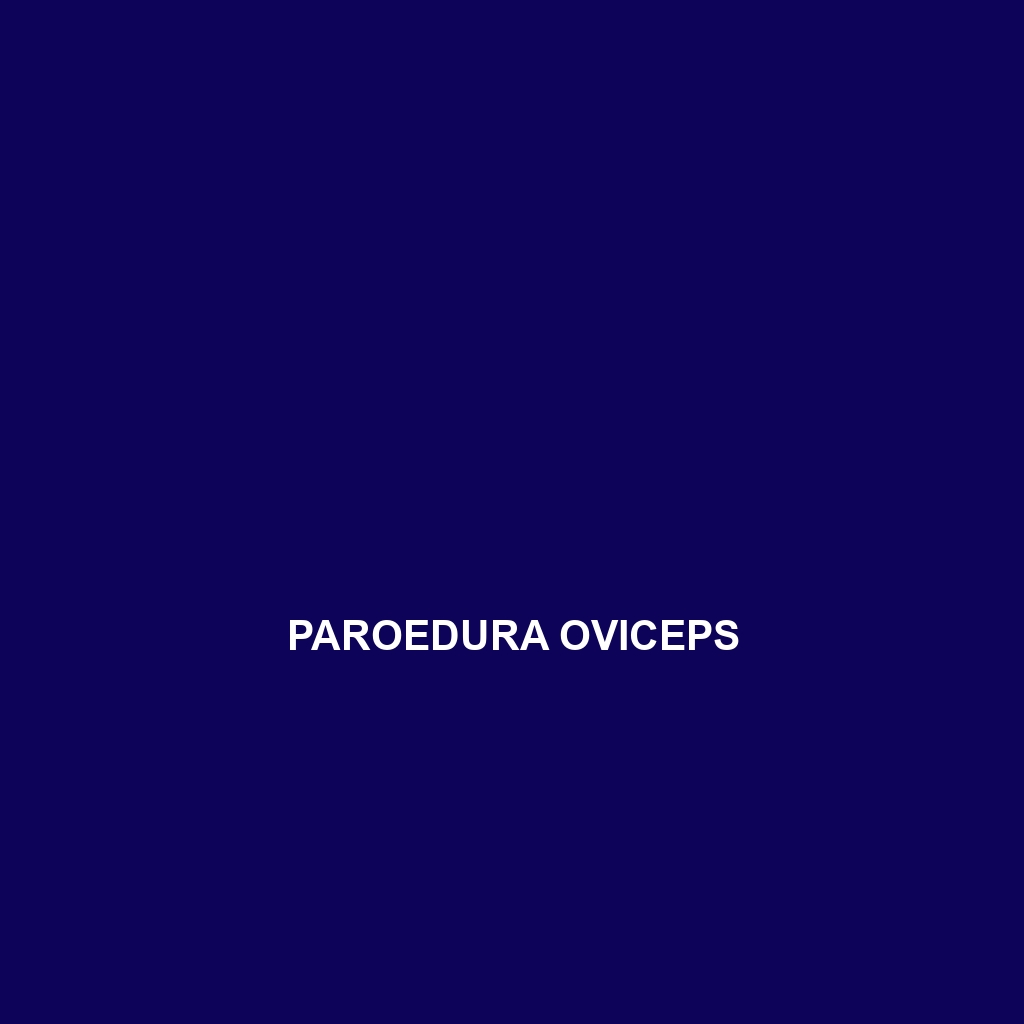Common Name
Paroedura oviceps
Scientific Name
Paroedura oviceps
Habitat
Paroedura oviceps, commonly known as the Madagascar oviceps gecko, is primarily found in the varied habitats of Madagascar. This species thrives in several environmental conditions including tropical rainforests, dry deciduous forests, and savannas. With Madagascar’s unique geological features, these geckos are often seen in areas that provide shelter and moisture, such as leaf litter and undergrowth. Their adaptability to different climates helps them survive in locations with both wet and dry seasons, emphasizing their range across various ecosystems.
Physical Characteristics
The Paroedura oviceps features distinct physical attributes that make it easily identifiable. Adults typically measure between 12 to 15 centimeters in length, showcasing a robust and stocky body structure. Their skin displays a range of colors from pale yellow to rich brown, often adorned with dark stripes or spots that serve as camouflage against the forest floor. A unique feature of this species is its somewhat enlarged, rounded head, which differentiates it from other gecko species. Their large, expressive eyes aid in night vision, facilitating their nocturnal lifestyle.
Behavior
This species exhibits intriguing behaviors, predominantly being nocturnal, which means they are most active at night. During this time, Paroedura oviceps engages in foraging and social interactions. Mating rituals involve a series of displays where males showcase their vibrant colors, competing for the attention of females. Socially, these geckos are relatively solitary but can be observed interacting during the mating season. They have been noted for their propensity to bask in warm spots during the evening hours, revealing a unique adaptation to both nocturnal life and temperature management.
Diet
Paroedura oviceps is primarily an insectivore, feeding on a diet that consists of various insects and invertebrates. Their diet largely includes crickets, roaches, and small worms, which they catch using their agile tongues. They occasionally consume organic matter like fruits and plant debris, categorizing them as opportunistic feeders. This adaptability in their dietary habits promotes their survival in the diverse ecosystems of Madagascar and demonstrates their role in controlling insect populations.
Reproduction
The reproductive cycle of Paroedura oviceps is marked by a fascinating process. These geckos typically breed once or twice a year, with the mating season associated with Madagascar’s rainy season. After a gestation period of approximately 30 days, females lay clutches of two eggs, which they deposit in warm, moist locations. Nesting is often done in the soft ground or under leaf litter. Parental care is minimal, with the hatchlings emerging fully capable of independent survival. Their rapid development allows them to reach maturity in less than a year, ensuring that populations remain stable.
Conservation Status
The conservation status of Paroedura oviceps is currently classified as Least Concern by the International Union for Conservation of Nature (IUCN). Despite this status, the species faces challenges primarily due to habitat loss driven by deforestation and human encroachment. Conservation efforts are ongoing, focusing on habitat preservation and creating protected areas to ensure the survival of this unique gecko and its ecosystem.
Interesting Facts
One of the most remarkable features of Paroedura oviceps is its ability to change color slightly depending on its environment, a characteristic shared by many Madagascar reptiles. They can also regenerate their tails after losing them, a common defensive mechanism against predators. Additionally, these geckos are known for their exceptional climbing skills, often navigating the intricate layers of their forest habitat with agility.
Role in Ecosystem
Paroedura oviceps plays a significant role within its ecosystem as both a predator and prey. By controlling insect populations, they help maintain the ecological balance, reducing the likelihood of insect overpopulation, which can adversely affect plant life. Furthermore, as prey for larger predators such as birds and snakes, they contribute to the food web, supporting various species within Madagascar’s rich biodiversity. Their interactions highlight their importance in maintaining a healthy ecosystem.
